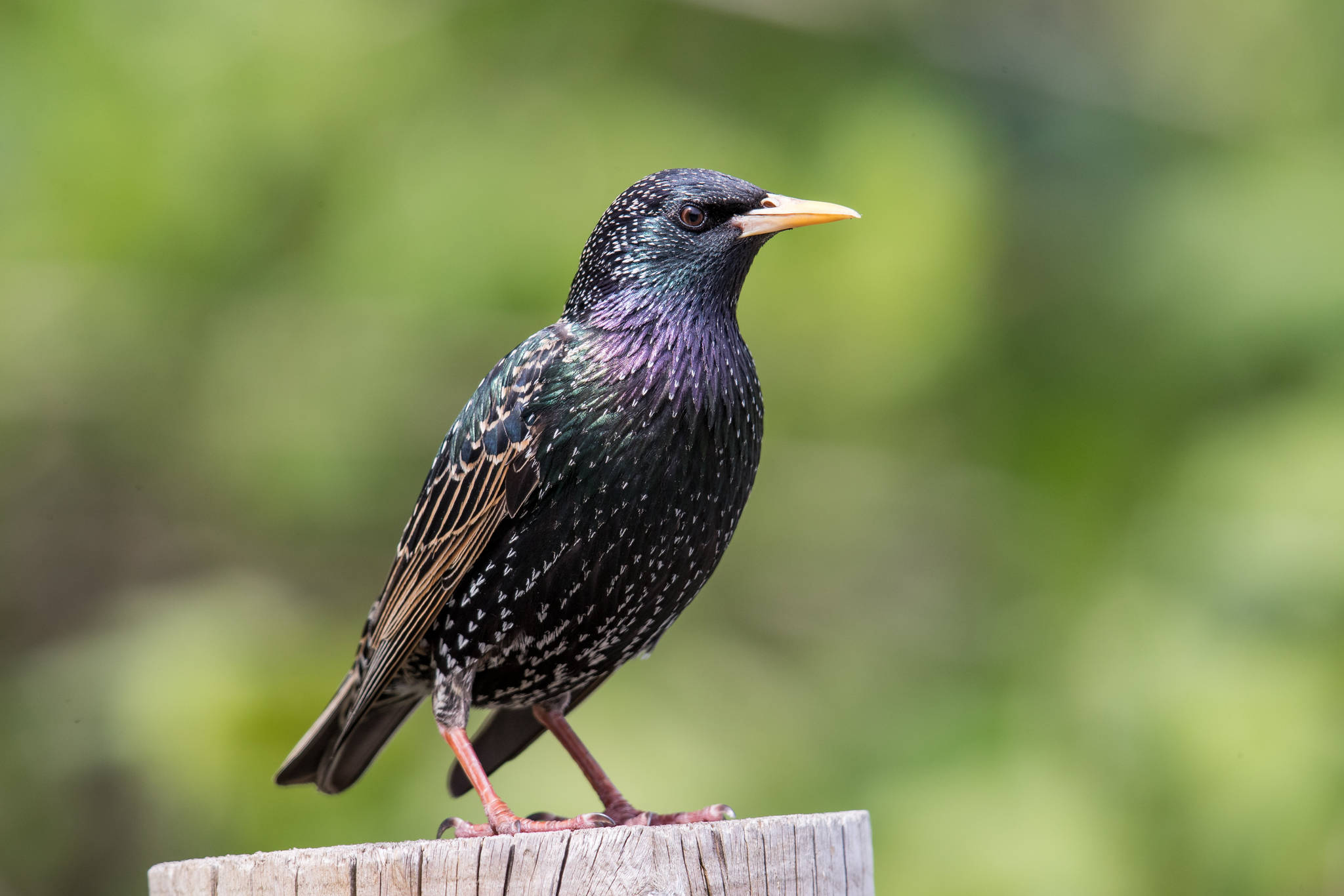This article has been updated to feature a new photo and caption. A previous version, due to editor’s error, attributed the nesting behavior of a European starling to a European swallow.
By Mary F. Willson
For the Juneau Empire
Most birds build nests chiefly of plant parts — branches, twigs, grass blades, mosses; in some cases, mud is a major component. Feathers, lichen, spider webs, plant down, hair and other materials may be included by various species.
Less well-known (to non-ornithologists) is that many birds, from songbirds to raptors and herons, also add fresh, green-leafy, nonstructural material to the nest. In general, the added greenery is from species that have aromatic leaves, rich in volatile compounds; these plants are a highly non-random, carefully selected portion of the plants available in the nesting habitat. The persistence of such a habit in so many species suggests that the use of greenery contributes in some way to reproductive success and reproductive fitness. The search for fitness consequences has led to numerous studies, but many questions still remain tantalizingly unanswered.
But before we go into all that, let’s first establish that — contrary to much conventional ‘wisdom’ — birds have a decent-to-excellent sense of smell. Depending on the species, they use it to locate insects in leaf litter or krill in the sea or carrion, to identify individuals, to locate a nest burrow when returning to it at night, and I bet that’s how they found my peanut-butter feeders when I first hung them up.
Although many ideas about the function of nest greenery have been suggested, three ideas have been examined most extensively.
Two species of starling express their interest in nest greenery entirely during the time of courtship and pair formation. Males then carry green material into the nest cavity in the presence of a female before egg-laying; that activity is correlated with testosterone levels. Some studies have shown that an increase of greenery led to larger clutches and more male chicks but experimental removal of greenery reduced the likelihood that a female laid eggs in that nest. Perhaps females use the presentation of greenery to judge the quality of the males?? But more testosterone in the males was associated with less paternal care of chicks and more greenery also led to more aggression among females. So the results of the several studies indicate some positive and some negative effects. In addition, other experiments found that nesting (already paired) females with nests decorated by their mates often left the greenery in place during incubation (although they commonly removed greenery added by an experimenter), and one recent study showed that the presence of greenery somehow induced more steady incubation behavior of the female, a shorter incubation period, and bigger chicks.
[Carrots and their wild relatives]
Perhaps the most popular idea about the function of nest greenery is that the volatile compounds from the leaves help deter parasites and pathogens. Many of the birds that use greenery add the greens after egg-laying (unlike starlings), during incubation and nestling periods. The volatile compounds are known to have negative effects on microbes and bugs in other situations. In line with that idea, birds that re-use old nests or nest in cavities (places where residual debris could house dormant pathogens and parasites) are more likely to put greenery into nests than birds that don’t re-use old nests and don’t nest in cavities. And one study of many species of songbirds in Argentina showed that botfly parasitism was much less in nests of species that added greenery.
However, studies of starlings found that the anti-parasite effects differed in different populations. And other results were conflicting too: if parasites were reduced, the nestlings were not measurably healthier than those in parasitized nests; contrarily, another study found that improved offspring survival. Then again, even if parasites were not reduced by greenery, nestlings in greened nests did better anyhow, possible because their immune systems were some bolstered (in some still-to-be-determined way) or because the females became better incubators.
Clearly, this common natural history phenomenon needs a lot more study—of different bird species, in different habitats, with different parasites and pathogens, with breeding birds of different ages and with different stress levels, and so on. The reproductive fitness consequences are there to be found, and they are likely to differ among species and situations.
Mark Twain once remarked that “There is something fascinating about science. One gets such wholesale returns of conjecture out of such a trifling investment of fact.” And that’s true! But, contrary to Twain’s implication that conjecture is just hot air, it’s the starting point for science to proceed. T. H. Huxley, famous British biologist and staunch Darwinian, noted that, without conjecture, we rarely get as far as actual facts: Reformulate those conjectures based on observations and limited data into testable hypotheses. Those are necessary steps to discovering real facts — such as those that lie beneath disparate, conflicting results. That’s how science works.
• Mary F. Willson is a retired professor of ecology. “On The Trails” appears every Wednesday in the Juneau Empire.

